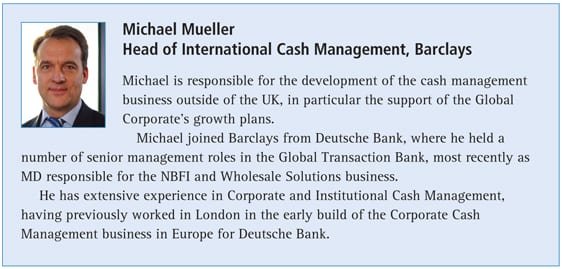by Michael Mueller, Head of International Cash Management, Barclays
Only a few years ago, companies focusing on efficiency viewed a banking structure based on a single global transaction bank as the best possible solution. In reality, multinationals might have needed to use three or four different banks in order to gain global coverage – but the consensus was very much that less is more.
In the last couple of years, this view has been turned on its head. In the current economic environment, more companies – particularly large corporations – are putting in place structures which use a larger number of banks, supported by bank-agnostic technology. This trend can be traced back to the difficulties that global banks have faced in the last few years.
Spreading the risk
Since the financial crisis began in 2008, companies have become increasingly aware of the fact that their banks represent a business risk to them – just as companies represent a business risk to their banks. As well as the risk that their deposits could be affected by the failure of a key bank, companies have also recognised that such an occurrence could affect their ability to make and receive payments, or disrupt their credit lines.
As corporations have become more sophisticated in their risk monitoring processes, companies which may have been working with a small number of providers – or indeed with a single global bank – have become increasingly concerned about those risk exposures and more proactive in monitoring and addressing them.
Sign up for free to read the full article
Register Login with LinkedInAlready have an account?
Login
Download our Free Treasury App for mobile and tablet to read articles – no log in required.
Download Version Download Version




























